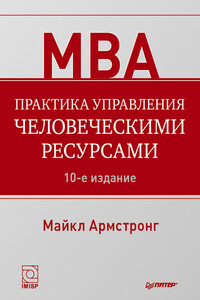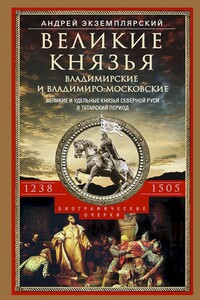Управление результативностью [заметки]
1
Hendry, C., Bradley, P. and Perkins, S. (1997) ‘Missed’. People Management, 15 May, pp. 20–5.
2
Lockett, J. (1992) Effective Performance Management: A strategic guide to getting the best out of people. London, Kogan Page.
3
Mohrman, A.M. and Mohrman, S.A. (1995) ‘Performance management is «running the business’”, Compensation and Benefits Review, July-August, pp. 69–75.
4
Walters, M. (1995) The Performance Management Handbook. London, Institute of Personnel and Development.
5
Beer, M. and Ruh, R.A. (1976) ‘Employee growth through performance management’, Harvard Business Review, July-August, pp. 59–66.
6
Institute of Personnel Management (1992) Performance Management in the UK: an analysis of the issues. London, IPM.
7
Bevan, S. and Thompson, M. (1991) ‘Performance management at the crossroads’, Personnel Management, November, pp. 36–9.
8
Armstrong, M. and Baron, A. (1998) Performance Management: The new realities. London, CIPD.
9
Purcell, J., Kinnie, K., Hutchinson S., Rayton, B. and Swart, J. (2003) Understanding the People and Performance Link: Unlocking the black box. London, CIPD.
10
Boxall, P. (1996) ‘The strategic HRM debate and the resource-based view of the firm’, Human Resource Management Journal, 6 (3), pp. 59–75.
11
Kamoche, K. (1996) ‘Strategic human resource management within a resource capability view of the firm’, Journal of Management Studies, 33 (2), pp. 213–33.
12
Egan, G. (1995) ‘A clear path to peak performance’, People Management, 18 May, pp. 34–7.
13
Incomes Data Services (1997) Performance Management. IDS Study No. 626. London, IDS.
14
Armstrong, M. and Baron, A. (1998) Performance Management: The new realities. London, CIPD. (Армстронг М., Барон А. Performance Management. Управление эффективностью работы. – М.: Гиппо, 2007.)
15
Purcell, J., Kinnie, K., Hutchinson S., Rayton, B. and Swart, J. (2003) Understanding the People and Performance Link: Unlocking the black box. London, CIPD.
16
Deming, W.E. (1986) Out of the Crisis. Cambridge, Mass., Massachusetts Institute of Technology, Center for Advanced Engineering Studies. (Выход из кризиса. Новая парадигма управления людьми, системами и процессами. – М.: Альпина Паблишер, 2011.)
17
Institute of Personnel Management (1992) Performance Management in the UK: an analysis of the issues. London, IPM.
18
Armstrong, M. and Baron, A. (1998) Performance Management: The new realities. London, CIPD. (Армстронг М., Барон А. Performance Management. Управление эффективностью работы. – М.: Гиппо, 2007.)
19
Ichniowski, C., Shaw, K. and Prennushi, G. (1997) ‘The effects of human resource management practices on productivity: a study of steel finishing lines’, The American Economic Review, June, pp. 104–22.
20
Delery, J.E. and Doty, H.D. (1996) ‘Modes of theorizing in strategic human resource management: tests of universality, contingency and configurational performance predictions’, International journal of Human Resource Management, 6, pp. 656–70.
21
Huselid, M.A. (1995) ‘The impact of human resource management: an agenda for the 1990s’, The International journal of Human Resource Management, 1 (1), pp. 17–43.
22
Guest, D.E. (1997) ‘Human resource management and performance: a review of the research agenda’, The International Journal of Human Resource Management, 8 (3), pp. 263–76.
23
Armstrong, M. and Baron, A. (1998) Performance Management: The new realities. London, CIPD.
24
Hutchinson, S. and Purcell, J. (2003) Bringing Policies to Life – the vital role of frontline managers. London, CIPD.
25
Purcell, J., Kinnie, K., Hutchinson S., Rayton, B. and Swart, J. (2003) Understanding the People and Performance Link: Unlocking the black box. London, CIPD.
26
Winstanley, D. and Stuart-Smith, K. (1996) ‘Policing performance: the ethics of performance management’, Personnel Review, Vol. 25 No. 6, pp. 66–84.
27
Tyler, T.R. and Bies, R.J. (1990) ‘Beyond formal procedures: the impersonal context of procedural justice’, in J.S. Carroll (ed.), Applied Social Psychology and Organizational Settings. Hillsdale, N.J., Lawrence Earlbaum.
28
Armstrong, M., and Baron, A. (1998) Performance Management: The new realities. London, CIPD.
29
Levinson, H. (1970) ‘Management by whose objectives?’, Harvard Business Review, July-August, pp. 125–34.
30
Neeley, A. and Adams, C. (2002) ‘The performance prism’, Encyclopaedia of Social Measurement. Elsevier.
31
Barlow, G. (1989) ‘Deficiencies and the perpetuation of power: latent functions in performance appraisal’, Journal of Management Studies, September, pp. 499–517.
32
Bowles, M.L. and Coates, G. (1993) ‘Image and substance: the management of performance as rhetoric or reality? ’, Personnel Review, Vol. 22 No. 2, pp. 3–21.
33
Carlton, I. and Sloman, M. (1992) ‘Performance appraisal in practice’, Human Resource Management Journal, Vol. 2 No. 3, Spring, pp. 80–94.
34
Deming, W.E. (1986) Out of the Crisis. Cambridge, Mass., Massachusetts Institute of Technology, Center for Advanced Engineering Studies. (Выход из кризиса. Новая парадигма управления людьми, системами и процессами. – М.: Альпина Паблишер, 2011.)
35
Engelmann, С.H. and Roesch, С.H. (1996) Managing Individual Performance. Scottsdale, Ariz., American Compensation Association.
36
Furnham, A. (1996) ‘Starved of feedback’, The Independent, 5 December, p. 16.
37
Grint, K. (1993) ‘What’s wrong with performance appraisal? A critique and a suggestion’, Human Resource Management Journal, Spring, pp. 61–77.
38
Hendry, C., Woodward, S.A., Bradley, P. and Perkins, S.J. (2000) ‘Performance and rewards: cleaning out the stables’, Human Resource Management Journal, Vol. 10 No. 3, pp. 46–62.
39
McGregor, D. (1957) ‘An uneasy look at performance appraisal’, Harvard Business Review, May-June, pp. 89–94.
40
Newton, T. and Findlay, P. (1996) ‘Playing God? The performance of appraisal’, Human Resource Management Journal, Vol. 6 No. 3, pp. 42–56.
41
Stiles, P., Gratton, L, Truss, C. (1997) ‘Performance management and the psychological contract’, Human Resource Management Journal, Vol. 2 No. 1, pp. 57–66.
42
Townley, B. (1990/1991) ‘Appraisal into UK universities’, Human Resource Management Journal, Vol. 1 No. 2, pp. 27–44.
43
Townley, B. (1990) ‘A discriminating approach to appraisal’, Personnel Management, December, pp. 34–7.
44
Winstanley, D. and Stuart-Smith, K. (1996) ‘Policing performance: the ethics of performance management’, Personnel Review, Vol. 25 No. 6, pp. 66–84.
45
Kinnie, N. and Swart, J. (2004) Managing the Careers of Professional Knowledge Workers. London, CIPD.
46
Scarborough, H. and Elias, J. (2001) Evaluating Human Capital. London, CIPD.
47
Purcell, J., Kinnie, K., Hutchinson S., Rayton, B. and Swart, J. (2003) Understanding the People and Performance Link: Unlocking the black box. London, CIPD.
48
Accounting for People (2003), Report from the Task Force to the Secretary of State for Trade and Industry.
49
Lawler, E.E. (2003) ‘Current performance management practices’, WorldatWork Journal, 12 (2), pp. 21–30.
50
Youndt, M.A. (2000) ‘Human resource considerations and value creation: the mediating role of intellectual capital’, Paper delivered at the National Conference of the US Academy of Management, Toronto, August.
51
Swart, J. and Kinnie, N. (2004) Managing the Careers of Professional Knowledge Workers. London, CIPD.
52
Nalbantian, Haig. R., Guzzo, Richard A., Kieffer, Dave and Doherty, Jay (2004) Play to Your Strengths. New York, McGraw-Hill.
53
Bontis, N. and Dragonetti, N.C. (1999) ‘The knowledge toolbox: a review of the tools available to measure and manage intangible resources’, European Management Journal, 17, pp. 391–402.
54
Fitz-Enz, J. (2000) The ROI of Human Capital: Measuring the economic value of employee performance. New York, Amacom.
55
Mayo, A. (2001) The Human Value of the Enterprise: Valuing people as assets – monitoring, measuring, managing. London, Nicholas Brealey.
56
Purcell, J., Kinnie, K., Hutchinson S., Rayton, B. and Swart, J. (2003) Understanding the People and Performance Link: Unlocking the black box. London, CIPD.
57
Human Capital External Reporting Framework (2003), London, CIPD.
58
Scarborough, H. and Elias, J. (2001) Evaluating Human Capital. London, CIPD.
59
Pedler, M., Boydell, T. and Burgoyne, J. (1989) ‘Towards the learning company’, Management Education and Development, 20 (1), pp. 1–8.
60
Tamkin, P., Barber, L. and Hirsh, W. (1995) Personal Development Plans: Case studies of practice. Brighton, The Institute for Employment Studies.
61
Marsden, D. and French, S. (1998) What a Performance: Performance-related pay in the public services. London, Centre for Economic Performance.
62
Chartered Institute of Personnel and Development (2003) Reward Management 2003: A survey of policy and practice. London, CIPD.
63
Brown, D. and Armstrong, M. (1999) Paying for Contribution. London, Kogan Page.
64
Armstrong, M. (1976) A Handbook of Personnel Management Practice. London, Kogan Page.
65
Kessler, I. and Purcell, J. (1992) ‘Performance-related pay: objectives and application’, Human Resource Management journal, Vol. 2 No. 3, Spring, pp. 6–33.
66
Armstrong, M. and Murlis, H. (1998) Reward Management, 4th edn. London, Kogan Page.
67
Leventhal, G.S. (1980) ‘What should be done with equity theory?’, in G.K. Gergen, M.S. Greenberg and R.H. Willis (eds) Social Exchange: Advances in theory and research, New York, Plenum.
68
Chartered Institute of Personnel and Development (2003) Reward Management 2003: A survey of policy and practice. London, CIPD.
69
Kaplan, R.S. and Norton, D.P. (1992) ‘The balanced scorecard – measures that drive performance’, Harvard Business Review, Jan-Feb, pp. 71–9.
70
Guest, D., King, Z., Conway, N., Michie, J. and Sheehan-Quinn, M. (2001) Voices from the Boardroom. London, CIPD.
71
Purcell, J., Hutchinson, S. and Kinnie, N. (1998) Getting Fit, Staying Fit: Developing lean and responsive organisations. London, Institute of Personnel and Development.
72
Chivers, W. and Darling, P. (1999) 360-degree Feedback and Organisational Culture. London, Institute of Personnel and Development.
73
Ward, P. (1997) 360-degree Feedback. London, Institute of Personnel and Development.
74
London, M. and Beatty, R.W. (1993) ‘360-degree feedback as competitive advantage’, Human Resource Management, Summer/Fall, pp. 353–72.
75
Deming, W.E. (1986) Out of the Crisis. Cambridge, Mass., Massachusetts Institute of Technology, Center for Advanced Engineering Studies. (Выход из кризиса. Новая парадигма управления людьми, системами и процессами. – М.: Альпина Паблишер, 2011.)
76
Fletcher, C. (1993) Appraisal: Routes to Improved performance. London, Institute of Personnel and Development.
77
Engelmann, С.H. and Roesch, С.H. (1996) Managing Individual Performance. Scottsdale, Ariz., American Compensation Association.
78
Hutchinson, S. and Purcell, J. (2003) Bringing Policies to Life: The vital role of front line managers in people management. London, CIPD.

В книге всемирно известного ученого дан подробный обзор теоретических и практических основ управления человеческими ресурсами. В числе прочих рассмотрены такие вопросы, как процесс управления ЧР; работа и занятость; организационное поведение; обеспечение организации управления трудовыми ресурсами; управление показателями труда; вознаграждение.В десятом издании материал многих глав переработан и дополнен. Это обусловлено значительным развитием УЧР: созданием теории и практики управления человеческим капиталом, повышенным вниманием к роли работников «передней линии», к вопросам разработки и внедрения стратегий УЧР, к обучению и развитию персонала.

Андрей Васильевич Экземплярский — русский историк, успешно окончил историко-филологический факультет Санкт-Петербургского университета. Еще в студенческие годы под руководством K. H. Бестужева-Рюмина работал с польскими источниками по истории Смутного времени. Был преподавателем в гимназиях Польши, в Екатеринбурге и Перми. Принимал участие в работе над Энциклопедическим словарем Брокгауза и Евфрона. Исследование «Великие и удельные князья Северной Руси в татарский период» — авторитетнейший источник о жизни и деятельности русских князей периода феодальной раздробленности.

Мы можем общаться с Богом! Какая потрясающая истина! Но это только начало. Его воля в том, чтобы наши взаимоотношения становились все более близкими и глубокими. Он сказал, что хочет открыться нам в любви, славе и святости. И поскольку Сам Бог бесконечен, то и развитию отношений с Ним также нет предела. Эти отношения не только с одним, каким-то особенным человеком, Бог приглашает в общение и желает говорить с каждым верующим. Книга "Чудо общения с Богом" – реальная помощь тем, кто хочет жить в каждодневном общении со своим Творцом!

Грибы – удивительное создание природы. Они вызывают восторг, когда их находишь в лесу, например, желтых лисичек во мху после теплого дождика, или красную шляпку подосиновика в траве на лужайке. Но какие же грибы вкусные в супчике или в жаркое! Эта книга сообщит полезную информацию о том, какие бывают грибы, о их свойствах и особой обработке. А также добавит в вашу коллекцию много новых блюд и заготовок, которые без сомнения нужно приготовить.

Эта книга не просто энциклопедический перечень виноделов и виноградарей, но одновременно и учебник, и покупательский гид. Ее цель — превратить вас в более знающего и уверенного покупателя, достаточно осведомленного о «закулисных» деталях, чтобы при покупке вина вы могли сделать самый разумный выбор.

Выбор и покупка подержанного автомобиля в России до недавнего времени были лотереей. Проигрыш в этой лотерее означал сотни тысяч рублей, выпущенных на ветер. Однако эта книга, представляющая собой краткое руководство по приобретению б/у машины, а также услуги нашего сервиса «АвтоКод» помогут свести риск нарваться на мошенников к нулю!

В книге рассказывается история главного героя, который сталкивается с различными проблемами и препятствиями на протяжении всего своего путешествия. По пути он встречает множество второстепенных персонажей, которые играют важные роли в истории. Благодаря опыту главного героя книга исследует такие темы, как любовь, потеря, надежда и стойкость. По мере того, как главный герой преодолевает свои трудности, он усваивает ценные уроки жизни и растет как личность.